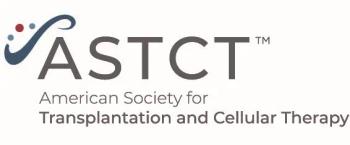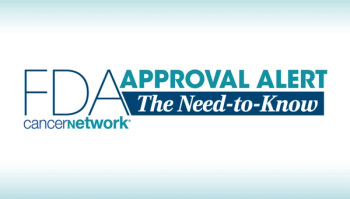
Nilotinib Continues to Surpass Imatinib in Newly Diagnosed CML
The 24-month follow-up data from the ENESTnd trial showed that patients treated with nilotinib (Tasigna) had significantly better response rates and significantly lower rates of progression to accelerated phase or blast crisis when on treatment
ORLANDO, FLA-Nilotinib still demonstrated superiority over imatinib (Gleevec) in patients with newly diagnosed chronic myeloid leukemia in chronic phase (CML-CP), according to an updated analysis of the phase III international ENESTnd trial.
The 24-month follow-up data, presented by Timothy P. Hughes, MD, a professor of hematology at the University of Adelaide in Australia, showed that patients treated with nilotinib (Tasigna) had significantly higher rates of major molecular response (MMR) and complete cytogenetic response (CCyR), as well as significantly lower rates of progression to accelerated phase or blast crisis when on treatment compared with patients treated with imatinib.
“We confirmed the
The study randomized 846 CML-CP patients to receive nilotinib 300 mg twice daily (n = 282 patients), nilotinib 400 mg twice daily (n = 281 patients), or imatinib 400 mg once daily (n = 283 patients).
The MMR rate was 66% in the nilotinib 300 mg twice daily arm, 62% in the nilotinib 400 mg twice daily arm, and 37% in the imatinib arm, (P < .0001 for both nilotinib comparisons).
The response to nilotinib was durable, Dr. Hughes noted. “Once patients did achieve a response at 12 months, less than 2% of patients in each of the nilotinib arms lost that response by 24 months,” he said.
Superior MMR rates were observed in both nilotinib arms versus the imatinib arm across all Sokal risk groups, Dr. Hughes noted.
The rate of complete molecular response (CMR) was also better with nilotinib. The CMR rate was 21% with nilotinib 300 mg twice daily and 17% with nilotinib 400 mg twice daily, compared with 6% with imatinib (P < .0001). Similarly, CCyR rates were superior with nilotinib. The CCyR rate was 85% with the lower dose of nilotinib and 82% with the higher dose, but 74% with imatinib (
Dr. Hughes said the superior efficacy of nilotinib was further demonstrated using the 2009 European LeukemiaNet (ELN) 12-month milestone: Fewer patients had suboptimal response or treatment failure on nilotinib 300 mg twice daily (2% suboptimal response, 3% treatment failure) and nilotinib 400 mg twice daily (2%, 2%) compared with imatinib (11%, 8%). Also rates of progression to accelerated phase or blast crisis on treatment were lower in the nilotinib-treated patients at 0.7% for nilotinib 300 mg (P = .006) and 0.4% for nilotinib 400 mg (P = .003), which compared with 4.2% for imatinib.
There were also fewer CML-related deaths in the nilotinib-treated patients: Five with nilotinib 300 mg, three with nilotinib 400 mg, and 10 with imatinib.
“Taking all these things together, we think the evidence is getting stronger that nilotinib is a superior option upfront to imatinib 400 mg daily,” Hughes said.
Asked if there were any scenarios in which imatinib might be the better option, Dr. Hughes replied that “there are still issues as to whether using imatinib in a selective fashion, with rapid switching to nilotinib, may be an equivalent strategy. That remains to be determined. But this is certainly very exciting data. We think they support nilotinib as the new standard of care for patients with newly diagnosed CML.”
Newsletter
Stay up to date on recent advances in the multidisciplinary approach to cancer.



















































































